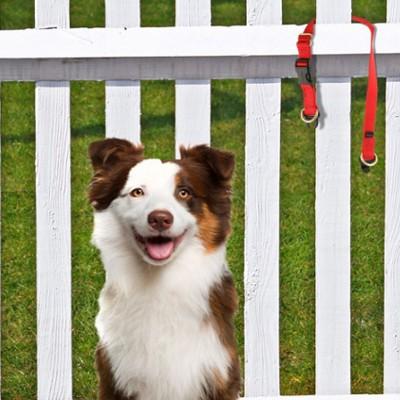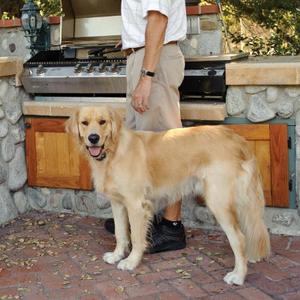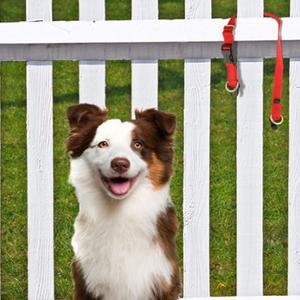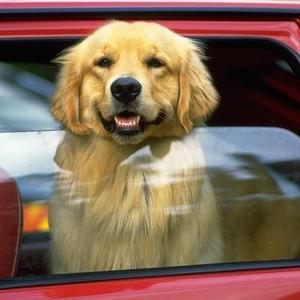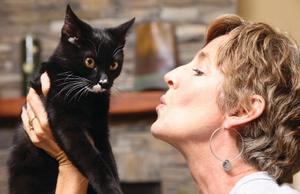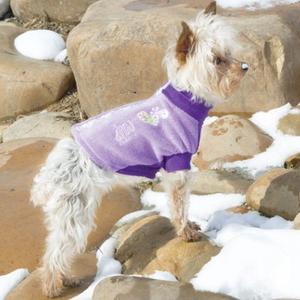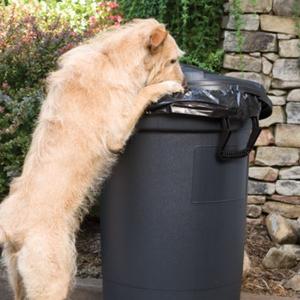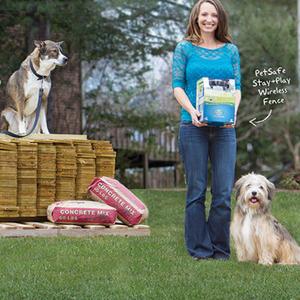When you leave the safe confines of your home, how do you provide sufficient restraint to keep your pet safe? Or if you have a yard where your dog can limitlessly bound, how does your canine companion stay away from cars, strangers, or poisons? Learn how to control your pet to keep him safe.
 City vs. Country Pets
City vs. Country Pets
Urban dwellers tend to be more aligned with the concept of getting out and about for a leash walk with their dogs on the sidewalk or at the park. Suburban and rural dwellers usually have more space than city folk, so their dogs and cats may also have more freedom to explore grassy lawns, field, and woods potentially on an unsupervised basis.
Regardless of your living situation and lifestyle, there are some common sense tactics involving proper pet restraint that will help keep your dog or cat safe from injury, illness, or even death.
 Avoiding Trauma
Avoiding Trauma
Consider that the unforeseeable can occur and trauma could cause injury that could permanently compromise quality of life or even lead to a beloved pet’s ultimate demise.
Trauma can come from seemingly non-harmful activities like slipping while walking in the yard or more severe incidents like being hit by a car, falling down a flight of stairs, or suffering an animal attack. Even standing, climbing stairs, jumping down from a high bed, running, sprinting for a ball, landing in an unusual position after catching a frisbee, and others are all potential sources of trauma.
My suggestion is to make efforts every day to reduce the likelihood traumatic incidents can occur.
 The Toxicity of Our City
The Toxicity of Our City
Our homes, yards, and other locations harbor innumerable known and concealed toxins. Toxicity lurks in the form of certain shrubs and flowers, fertilizers, pesticides, antifreeze, rotting animal and vegetable matter, medications, and supplements that are accidentally or maliciously placed within a pet’s reach.
A single lick, taste, or roll in a puddle of toxins can cause mild to life-threatening sickness.
Avoiding of toxins is the best bet, so familiarize yourself with potentially toxic plants and other substances via Animal Poison Control and Pet Poison Helpline.
Similar principles and techniques to avoid trauma also apply to preventing toxic exposure, so both topics will be covered in the below recommendations.
 Do You Know Where Your Pet Is?
Do You Know Where Your Pet Is?
Cats and small dogs tend to hide in closets or under beds to escape stressful situations and potential harm. The presence of medium and large-sized canines is typically more obvious, but they may instinctually flee from danger unbeknownst to their concerned owners.
Always be aware of your pet’s location in your house, yard, or public place and observe your his habits, including his preferred site to eliminate, nap, nest, or hide. Knowing the “free time” habits of your cat or dog will help deter trauma and toxicity. If someone left the front door open or you smell fire, you'll know the first place to look for your pet.
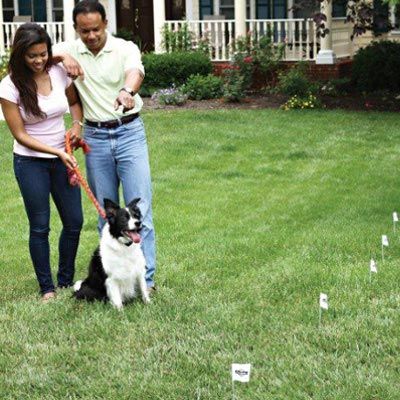 Keep Your Pets Close
Keep Your Pets Close
Perimeter fences help keep a pet confined to a defined space in your yard. Your fence should prevent a cat or dog from slipping through or getting his head or limb get stuck. Stay away from barbed or razor wire fences. For animals that shouldn’t be given greater access to the outdoors or areas of a home, crates and pens can enclose a pet in a more restricted fashion.
I’m an advocate of owners using a sturdy plastic and metal crate to safely confine a destructive puppy or adult dog instead of permitting the pooch the freedom to destroy a room’s interior during times when full observation isn’t possible. Free-standing or fixed gates can also help keep pets confined to a particular room and out of harm’s way. As gates can be jumped over or broken through, some dogs or cats may require the crate option.
PetSafe Brand has many options for In-Ground Fences or Wireless Fences that keep your pet under your control in the yard. PetSafe pet doors also help you maintain control of a dog or cat’s access to the great outdoors.
 Give Your Pet an I.D.
Give Your Pet an I.D.
Every time your pet leaves your home, he should be properly identified with a collar and tags or embroidery with his name and your phone number. Attach tags with rabies vaccination information as provided by your veterinarian to show your pet has been properly immunized and is not a risk to spread preventable illness.
Since tagged collars can be removed or fall off, microchips increases the likelihood you and your pet will be reunited. Keep your personal information up to date with the microchip manufacturer, especially upon moving to a new home where your pet may not be as familiar with his surroundings.
As microchip identification requires a scanner and collars and tags can go missing, using both is ideal.
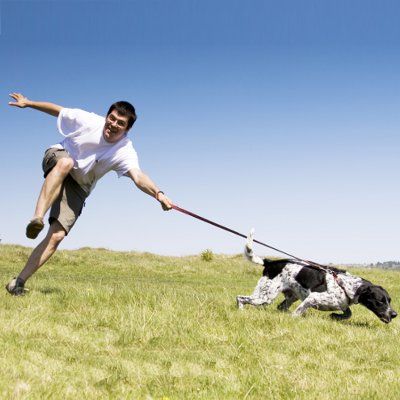 Remember the Leash Law
Remember the Leash Law
Besides helping to properly identify a dog, a collar is great for attaching a leash for outdoor excursions. For dogs who aren't properly trained to heel by an owner’s side, I suggest using a no-pull chest harness to reduce the likelihood of neck injury.
The spine and nerves are just some of the structures in the neck that can be injured when a dog yanks on his collar or is the recipient of a forceful tug. The esophagus, windpipe, muscles, and other parts of your dog's throat are at risk for injury when a collar is aggressively pulled.
The Easy Walk® Reflective Harness & Leash provides dogs with a controlled trekking experience and enhanced visibility during dark hours of the day or night. Walking a pet outside isn’t exclusive to canines, as the Come With Me Kitty Harness and Bungee Leash allows owners to get a feline friend out and about for controlled activity and socialization.
 Car Seats: Not Just for Kids
Car Seats: Not Just for Kids
Pet transport is vitally important for our canine and feline companions when partaking in any vehicular trip. A seemingly simple accident could cause your dog or cat to suddenly be thrust forward or out the window. It’s important that your pet is kept stable with limited mobility. I recommend size-appropriate and comfortable seat belts and carriers to provide car safety for traveling pets.
Rigid plastic “clamshell” carriers feature metal side ventilation panels and a front gate to provide a safer means of transport than collapsible options. They're meant to go on airlines, as they better maintain rigidity and can be fixed to the seat or other flat surface.
If an animal companion is stressed out by travel and can’t be left at home, talk to your veterinarian about an sedative or anxiety-relieving medication.
Taking the time and making the effort to plan for proper pet restraint can help keep your beloved companion healthy and present in your life for years to come. Don’t wait until it’s too late. Always practice proper pet restraint.

